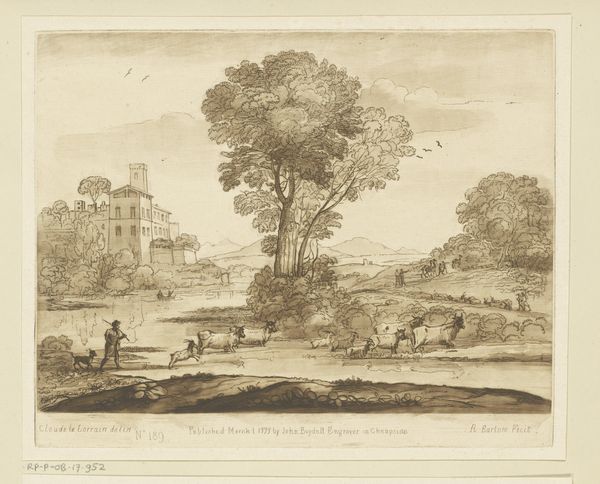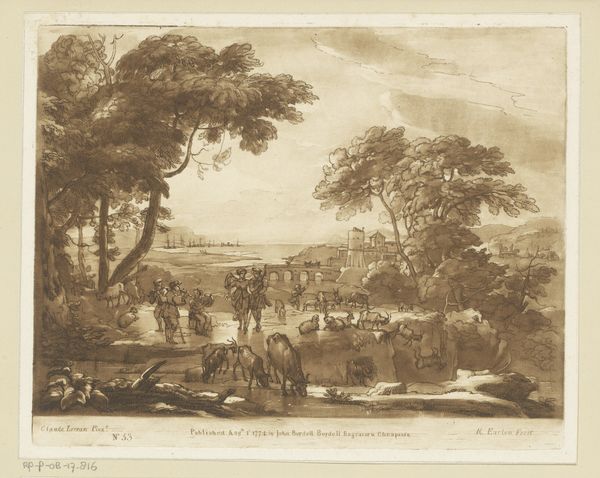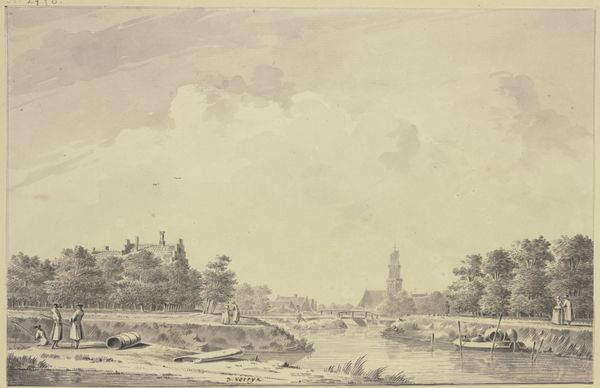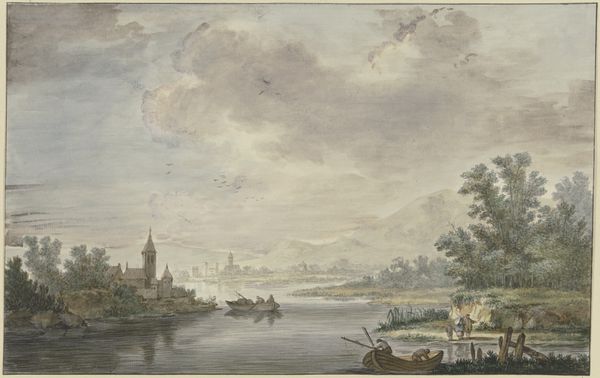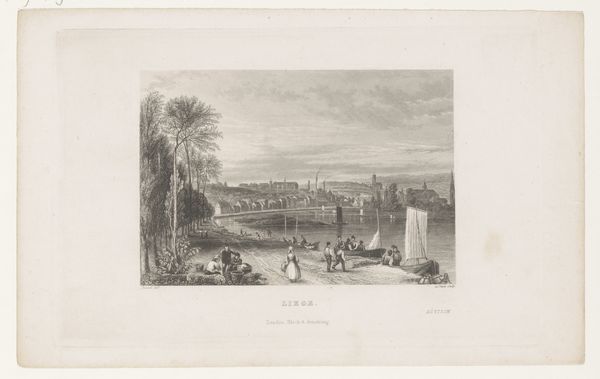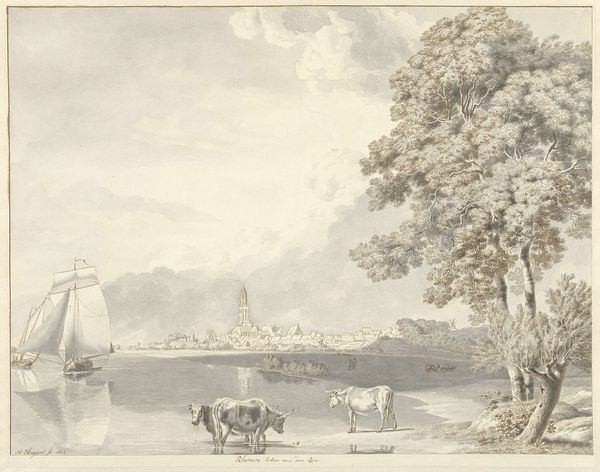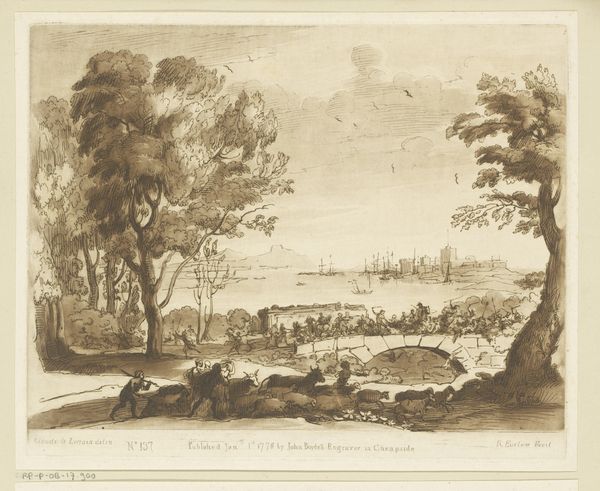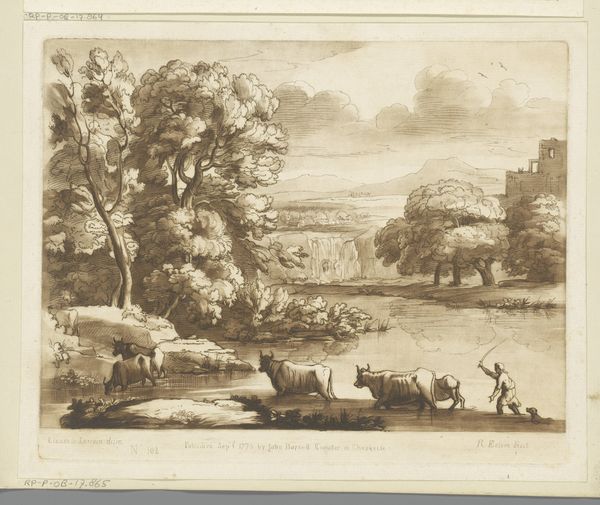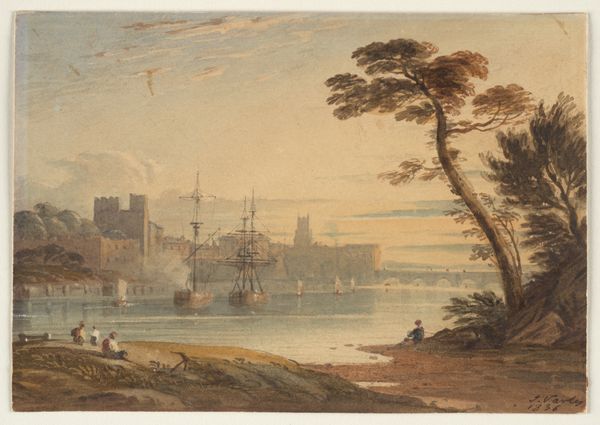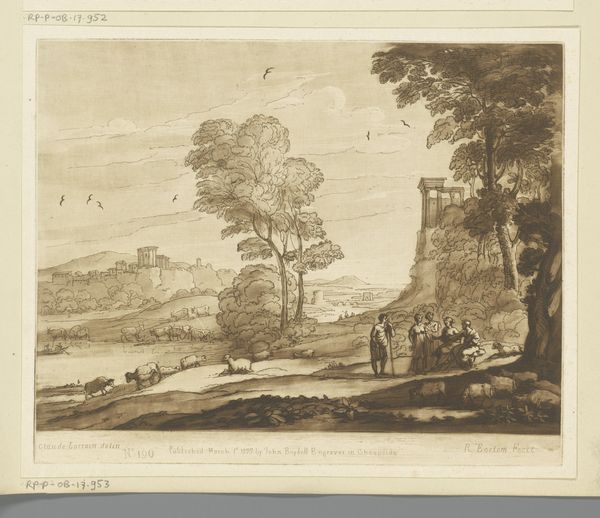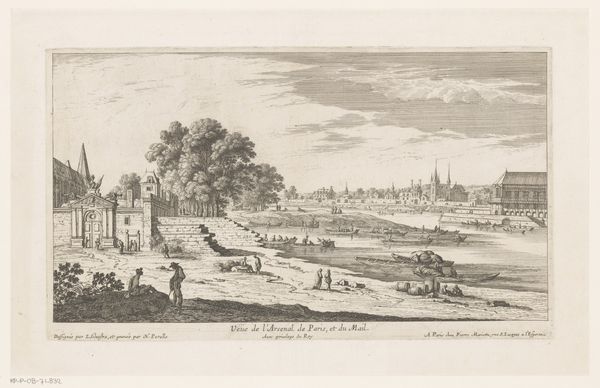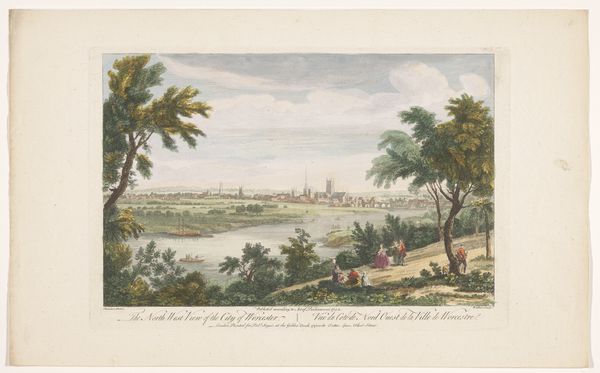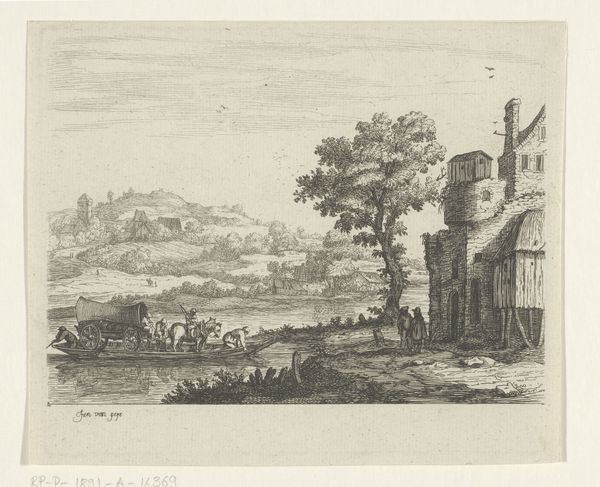
drawing, print, gouache, paper, watercolor
#
drawing
# print
#
gouache
#
landscape
#
paper
#
oil painting
#
watercolor
#
romanticism
#
realism
Dimensions: 273 × 444 mm
Copyright: Public Domain
Editor: This is "Environs of Windsor Castle," made with drawing, print, gouache and watercolor on paper by Thomas Shotter Boys. It has a somewhat dreamlike quality due to the diffuse watercolor, but there is realism there, too. How do you interpret this work? Curator: Let's consider the materiality of the artwork first. Boys' choice of gouache and watercolor on paper speaks volumes. These were readily accessible and relatively inexpensive materials. This suggests the artist was intentionally engaging with a mode of production that wasn’t necessarily geared towards the elite art market, right? Editor: I hadn't considered the economic side. So, it’s not just a choice of aesthetics, but a conscious decision linked to access and perhaps a different kind of audience? Curator: Exactly! And observe how he captures Windsor Castle. It's there, monumental, but not dominating. The focus is on the *environs*, the daily life around it: figures on boats, soldiers, people simply existing. Boys documents labor. It subtly shifts our gaze to the processes of everyday life that support even the grandest structures. What does that tell you about whose stories are often told? Editor: It sounds like he’s subtly highlighting the workers and their lives in contrast to the castle itself and maybe romanticizing these processes? Curator: In part. He’s also using readily available materials, crafting scenes of life from accessible means. The 'romantic' aspect emerges, not just from subject, but also in that tension between the labor and the material realities of art production itself, don’t you think? Editor: So, his artistic choices, from medium to subject, reflect a conscious engagement with material conditions and the social fabric surrounding a monumental symbol of power. Thanks for making me consider those aspects! Curator: Absolutely. It encourages us to think critically about not only what we see but also how it came to be made and distributed, and whose stories get valued through that process.
Comments
No comments
Be the first to comment and join the conversation on the ultimate creative platform.
